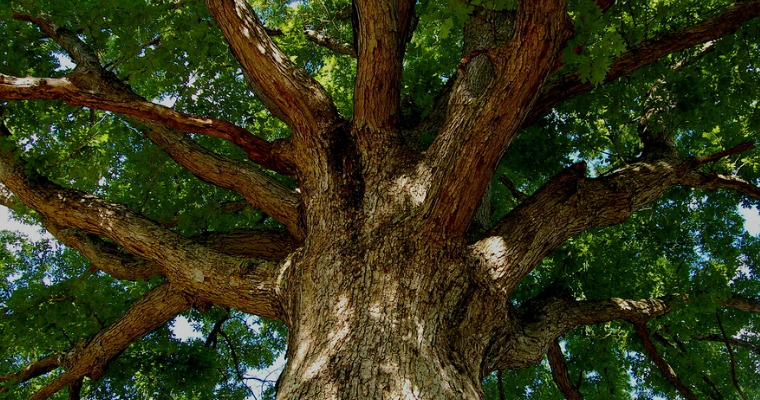White oak is a hardwood tree that’s native to the Southern United States, including Texas. When mature, it can reach heights of 80 to 100 feet, making it an excellent tree to grow in your landscape for shade.
But if you’re planning to grow white oaks, you should familiarize yourself with the five following diseases to which this tree species is susceptible.
#1) Powdery Mildew
Powdery mildew is a fungal disease that manifests as a powder-like substance of leaves. It usually affects white oaks during the fall season or early winter.
The cool temperatures allow the fungi to thrive, and as the fungi reproduces it creates a white powder-like substance on the tree’s leaves.
Inspect your white oaks at least once a month during fall and winter for signs of this common fungal disease.
#2) Leaf Blister
Another common disease affecting white oaks is leaf blister. As the name suggests, trees affected by this disease develop raised blisters on their leaves.
Once the leaf blister-causing fungi takes hold, an infected tree will begin to rapidly make new leaf cells. As these new cells accumulate, it creates a raised section on the leaf, resembling that of a blister.
#3) Leaf Spot
Not to be confused with leaf blister, leaf spot is a disease that manifests as brown, irregularly shaped patches on the tree’s leaves.
The good news is that leaf spot doesn’t pose any risk of serious harm to your white oaks.
Nonetheless, you should treat any infected white oaks with an appropriate fungicide and remove any infected limbs and stems.
#4) Oak Wilt
Oak Wilt is a common fungal disease in white oaks that’s caused by the Bretziella fagacearum fungi. When compared to the other diseases listed here, it’s one of the most harmful.
If a white oak becomes infected with the Bretziella fagacearum fungi, its leaves will turn brown and fall off. As the disease progresses, it can lead to complete death of the tree.
#5) Leaf Scorch
Also known as sun scorch, leaf scorch is yet another disease to which white oaks are susceptible. This disease isn’t caused by fungi, however. It’s actually caused by lack of water.
If a white oak doesn’t get enough water, certain changes will occur to its health. At first, you may notice some of the tree’s leaves turning brown and wilting. Eventually, it may shed its leaves, resulting in a thinner canopy.
But because leaf scorch is caused by dehydration, it’s easily treated and prevented with proper landscape irrigation.
The Woodsman Company offers tree planting, tree pruning and shrub trimming, tree removal and stump grinding as well as a tree wellness program.
If we can help with any of your tree care needs give us a call at 512-846-2535 or 512-940-0799 or


Great list and Thank you for putting up a list of deadly diseases found in White Oak Trees for the tree community out there. I’ll just like to mention of the most common and dangerous disease found in Oak trees which you’ve forgot to mention. Anthracnose poses one of the most serious threats of all white oak tree fungi. This disease — indicated by blotchy brown leaves or leaf curl — causes healthy trees to drop foliage and may lead to death in weak, small or unhealthy plants.
Hi Paul – thanks for your input.
There are few things more beautiful than a giant white oak. Simultaneously, there are few things as sad as to see one dead or riddled with disease. Thanks so much for sharing about signs to look for in these trees. We have a few on our land and I want to ensure they live well past me.